If you are thinking about getting a pet for your child, how about reptiles? They make excellent pets, simply because they are exotic and unique. These unique creatures are low-maintenance, interactive, and cute. Having reptiles as a kid can teach your child a lot of responsibility.
You never know, a reptile may help your child know what he or she wants to pursue in life, such as a biologist. These exotic pets can also bring your child so much joy.
But, here is the thing, not all reptiles are child-friendly. Some reptiles, even the most popular ones, make terrible pets for children.
That is precisely why you need this article, which will introduce you to our 9 child-friendly reptiles that are safe for your family. Read on to learn more!
What are Reptiles?
Reptiles are land animals that have dry skin covered by scales. They are cold-blooded vertebrates that lay eggs.
This group of animals is made up of lizards, chameleons, snakes, skinks, turtles, tortoises, and alligators. These animals are ectothermic, which means their body temperature is dependent on their environment. Reptiles also come in all different shapes, sizes, and colors.
Some reptiles, like leopard geckos and bearded dragons, can be used for animal therapy for children. This is so because these animals are calm, friendly, and like to be cuddled.
9 Child-Friendly Reptiles
For each reptile to make it to this list, it had to meet five important criteria, which include the following.
- Cheap and easy to feed and keep
- Friendly, calm, and easy to handle
- It has to be not dangerous
- It needs to be hardy and tolerant because kids tend to make mistakes
1. Leopard Gecko
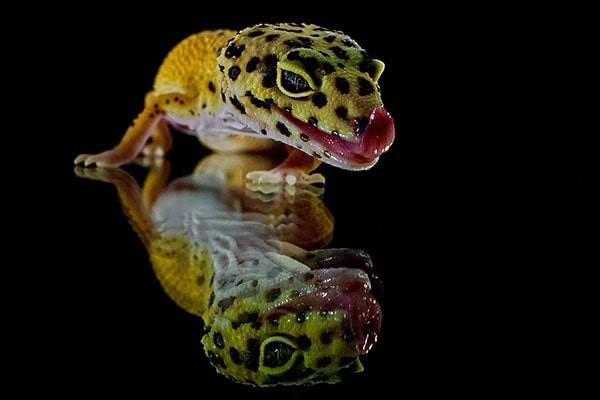
Photo by Andrey Tikhonovskiy on Unsplash
A leopard gecko can make a great pet for a child. Leopard geckos are very hardy, tolerant, passive, and easy to handle. These little animals really like to be petted and cuddled.
Over a long time, geckos have developed special features that help them survive. One of such unique features is the tail, which serves several purposes. They use it for balancing, storing fat for energy, and acting as camouflage. And they can shed their tail.
These interesting lizards are also easy to look after. They only need one size of an enclosure because they don’t grow too big. They don’t need special lighting, which is quite expensive. Get more information on how to care for a leopard gecko at reptileslife.com.
Another interesting aspect of these little creatures is that they don’t have teeth. So, if they accidentally bite kids (very seldomly), they are not going to hurt them.
2. Crested Gecko
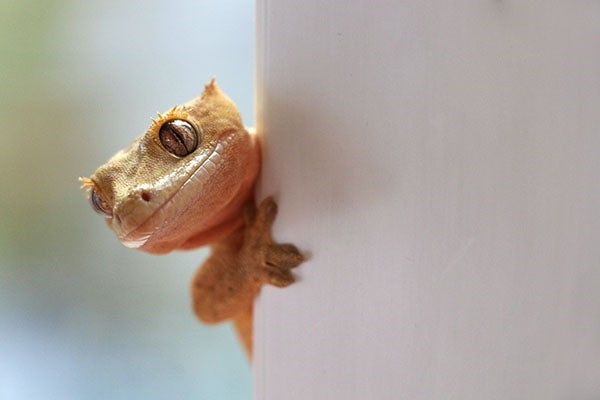 Photo by Pierre Bamin on Unsplash
Photo by Pierre Bamin on Unsplash
A crested gecko is an arboreal lizard with a relatively docile temperament and a gentle disposition. Crested geckos are easy to handle when they are comfortable.
Although juvenile crested geckos may tend to be nervous and skittish when handled, adults are more tolerant. Crested geckos like to jump probably because they are arboreal reptiles. So, that shouldn’t worry you so much.
Like leopard geckos, crested geckos are fairly easy to care for. For starters, they don’t need a very big enclosure or special lighting features. They can conveniently thrive on shop-bought gecko food as well as feeder insects and crickets.
3. Bearded Dragon
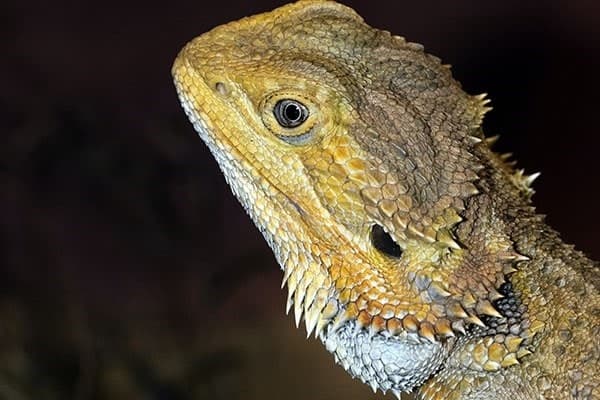 Photo by David Clode on Unsplash
Photo by David Clode on Unsplash
A bearded dragon or a beardie is a slow-moving reptile that is usually passive. Bearded dragons are among the most popular pet lizards out there.
Beardies have one of the best temperaments as far as reptiles are concerned. They are normally docile, easy to pick up and appreciate being handled. They are so cute, and they are one of the few reptiles we know that like to cuddle a lot.
Unlike geckos, beardies require a slightly larger aquarium tank or an enclosure. A smaller habitat will restrict activity, which may end up affecting the well-being of the beardie. They also need special lighting features to maintain the ideal temperatures and UVB.
4. Corn Snake
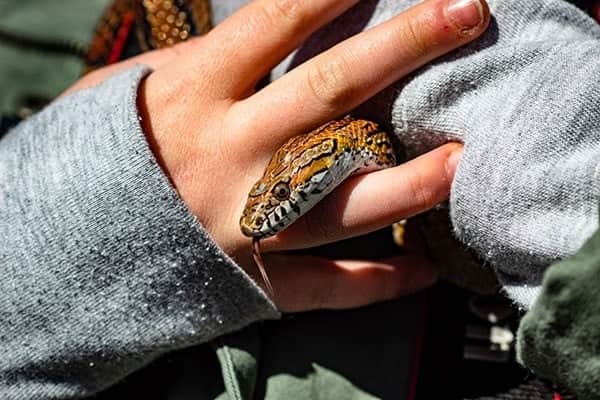 Photo by Joshua J. Cotten on Unsplash
Photo by Joshua J. Cotten on Unsplash
Also referred to as a red rat snake, a corn snake is a brownish-yellow or orange snake with a unique pattern of red blotches. Corn snakes also have distinctive rows of black and white marks on their bellies.
Most snakes are feared because of their aggressive behaviors and defenses. Corn snakes, on the other hand, are non-aggressive, docile, calm, and will be comfortable being handled by any member of your family. They are hardy, so they could handle a little bit of rough handling by a kid.
These reptiles are also easy to house. You just need a terrarium of at least 40 gallons. As far as feeding is concerned, they eat about one rodent a week, making them easy and economical to feed.
5. Blue-Tongued Skink
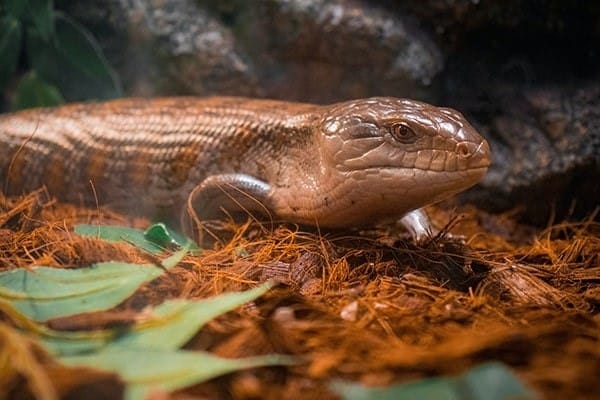 Photo by Alexander Kuzmin on Unsplash
Photo by Alexander Kuzmin on Unsplash
A blue-tongued skink is a heavy-bodied pet lizard that is characterized by a blue tongue, triangular head, and short tail and legs.
Blue-tongued skinks are arguably one of the best reptile species for a child. They are among the hardiest and most robust reptiles in our listing because of their size and stature. These reptiles are easily tamed, gentle, and often like to be handled, making them suitable for kids. You should, however, supervise your child when he or she is handling this lizard because it may get startled and jump.
Blue-tongued skinks will thrive in an enclosure that measures roughly 36 by 18 by 10 inches. They also need a larger floor space because they are terrestrial.
6. Ball Python

Photo by Timothy Dykes on Unsplash
A ball python is a nonvenomous constrictor that lives in sub-Saharan Africa in the wild. They are the smallest of the African pythons.
Ball pythons are considered good pets for children because they don’t grow too big, are well-mannered, and are easy to handle. They are generally very docile snakes and rarely bite. Frequent handling makes them more comfortable around children.
Ball pythons are not difficult to care for. You need a terrarium of around 40 gallons and access to food and clean water.
7. Stinkpot Turtle
A stinkpot or musk turtle is a distinctive reptile that a child would like to have as a pet. They are called stinkpot or musk turtles because they do musk and smell.
They are funny little turtles with a lot of personalities. Some are very secretive and shy, while others are curious and responsive. A stinkpot may appear boring on land, but it is very interactive and fun in the water. It’s going to swim around and come up for food.
A musk turtle should thrive in a 30 to 40-gallon tank with a water (dechlorinated) depth of about 8 inches. Musk turtles also thrive on a commercially available diet.
8. Kenyan Sand Boa
A Kenyan sand boa is a distinctive pet reptile with a thick, short body, small eyes, and a blunt head.
As far as frequent handling is concerned, Kenyan sand boas tick all the boxes. They have a manageable size for a child and don’t tend to move very quickly. They are also quite hardy, which means a little bit of rough handling will not hurt them.
What is truly impressive about these snakes is the fact that they can go a long time without water and food. This is a good thing for a busy parent who doesn’t have a lot of time to help his or her kid take care of the snake.
9. Collared Lizard
A collared lizard is a colorful reptile that is usually found in the deserts of the southwestern United States in the wild.
Collared lizards are normally intelligent and docile. But, they have to be tamed first before they can tolerate being handled frequently. So, we recommend parents always supervise their children when they are handling collared lizards.
A collared lizard should be comfortable in an enclosure or tank that is at least 30 gallons or larger.
These reptiles need to feed mainly on insects to get the appropriate nutrients for their well-being. Younger collared lizards usually eat more insects than adults.
Safety Tips to Consider
Reptiles can make great pets for kids, but some of them may be carrying salmonella bacteria even when they appear healthy and clean.
Salmonella doesn’t usually cause reptiles to get sick, but it can make a child ill. The risk of a child getting a salmonella infection is high because of their developing immune system.
In this section, we will provide you with important safety tips that will help reduce the risk of your child getting a salmonella infection.
- Take the reptile to a veterinarian to be cleared of salmonella bacteria
- Teach your child to thoroughly wash his or her hands with warm water and soap immediately after handling a reptile
- As a parent, it is your responsibility to ensure that your child washes his or her hands after touching a reptile
- Avoid introducing reptiles to younger children (less than 5 years old) because their immune systems are not well-developed
- Always keep the reptile enclosure or habitat as clean as possible and out of reach for younger children
Final Words on Child-Friendly Reptiles
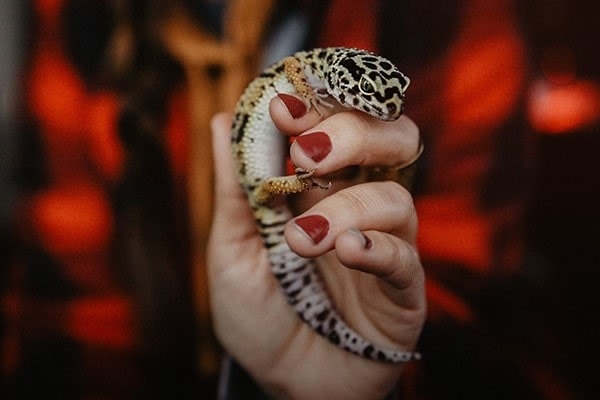 Photo by Macey Bundt on Unsplash.
Photo by Macey Bundt on Unsplash.
Pet reptiles like bearded dragons, leopard geckos, and corn snakes are fascinating for kids. But, they do need care and attention. So, you have to make sure that you and your family are well-prepared before taking one home. You need to have the appropriate habitat for the reptile, and teach your child how to handle and care for the animal. Most importantly, you (the parent or guardian) must always have time to supervise your child when he or she is handling a reptile. pet



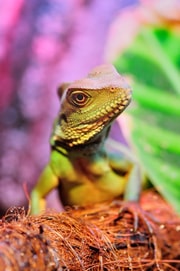

 Photo by
Photo by  Photo by
Photo by  Photo by
Photo by  Photo by
Photo by 
 Photo by
Photo by 


